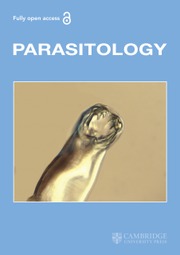Article contents
The Action of Synthetic Quinoline Compounds on Avian Malaria
Published online by Cambridge University Press: 06 April 2009
Extract
1. The results of previous workers on the action of plasmoquine on avian malaria, Plasmodium relictum (Grassi and Feletti, 1891), have been confirmed and extended. Sterilisation was obtained in a large proportion of birds (16 out of 33) treated during the normal incubation period.
2. Thirteen new synthetic quinoline compounds were found to have antimalarial action.
3. Two of these compounds, R 25 = 8-γ-aminopropylamino-6-ethoxy-quinoline and R 36 = 8-γ-anunopropylamino-6-methoxyquinoline, have therapeutic indices of 1: 16, are nearly equal to plasmoquine in potency and resemble it in action.
4. A third compound, R 44 = 8-γ-aminopropylamino-6-n-butoxyquino-line, has a therapeutic index of only 1 : 8, but its sterilising action is equal to or greater than plasmoquine, R 25 and R 36.
5. The remaining compounds have therapeutic indices of 1 : 8 or 1 : 4 and vary in their sterilising action.
6. Experiments are described which show the formation of methaemo-globin in vitro through the action of plasmoquine, R 25 and R 36. In this respect the order of activity of the compounds is R 36, R 25, plasmoquine.
Information
- Type
- Research Article
- Information
- Copyright
- Copyright © Cambridge University Press 1933
References
REFERENCES
- 8
- Cited by

